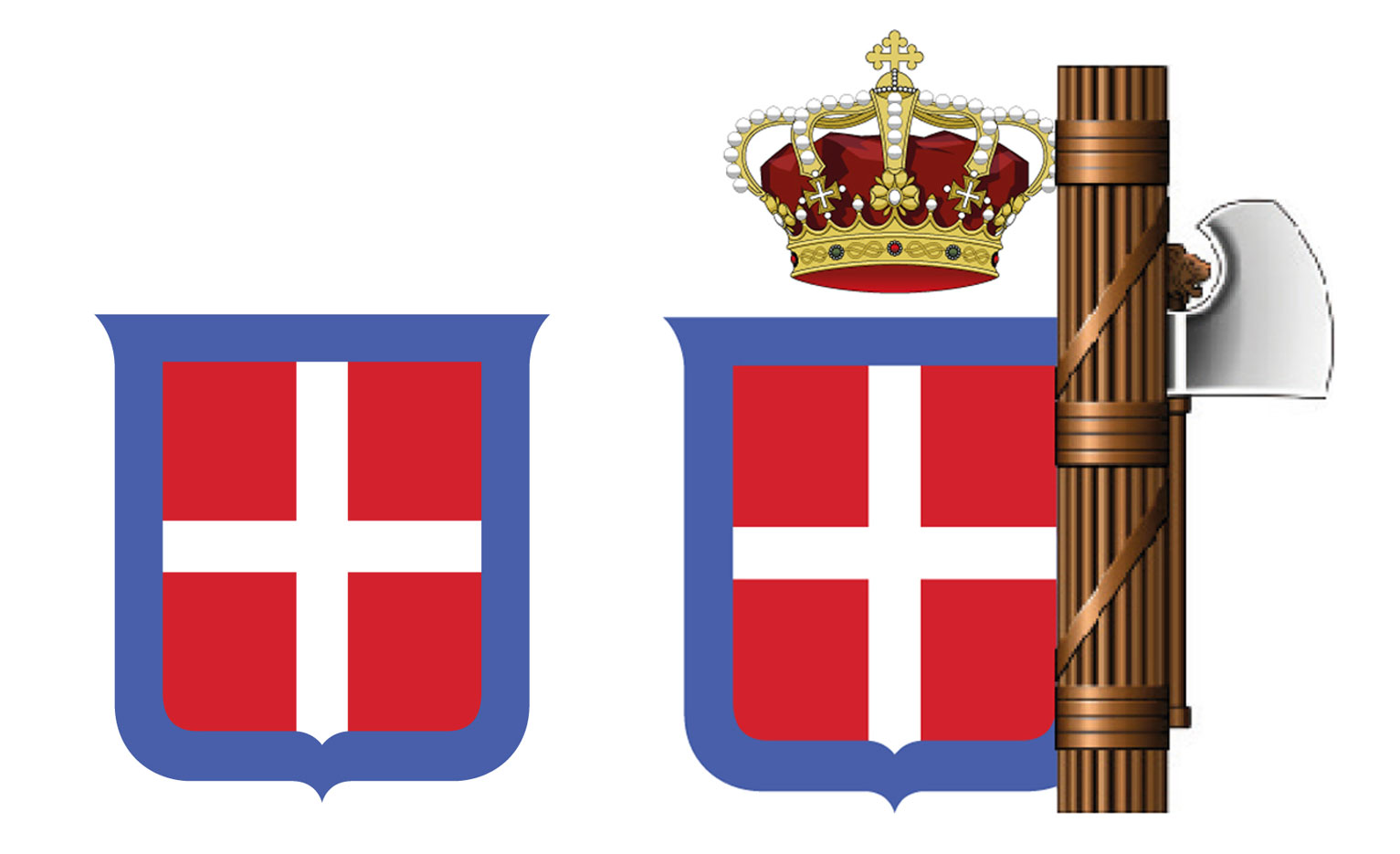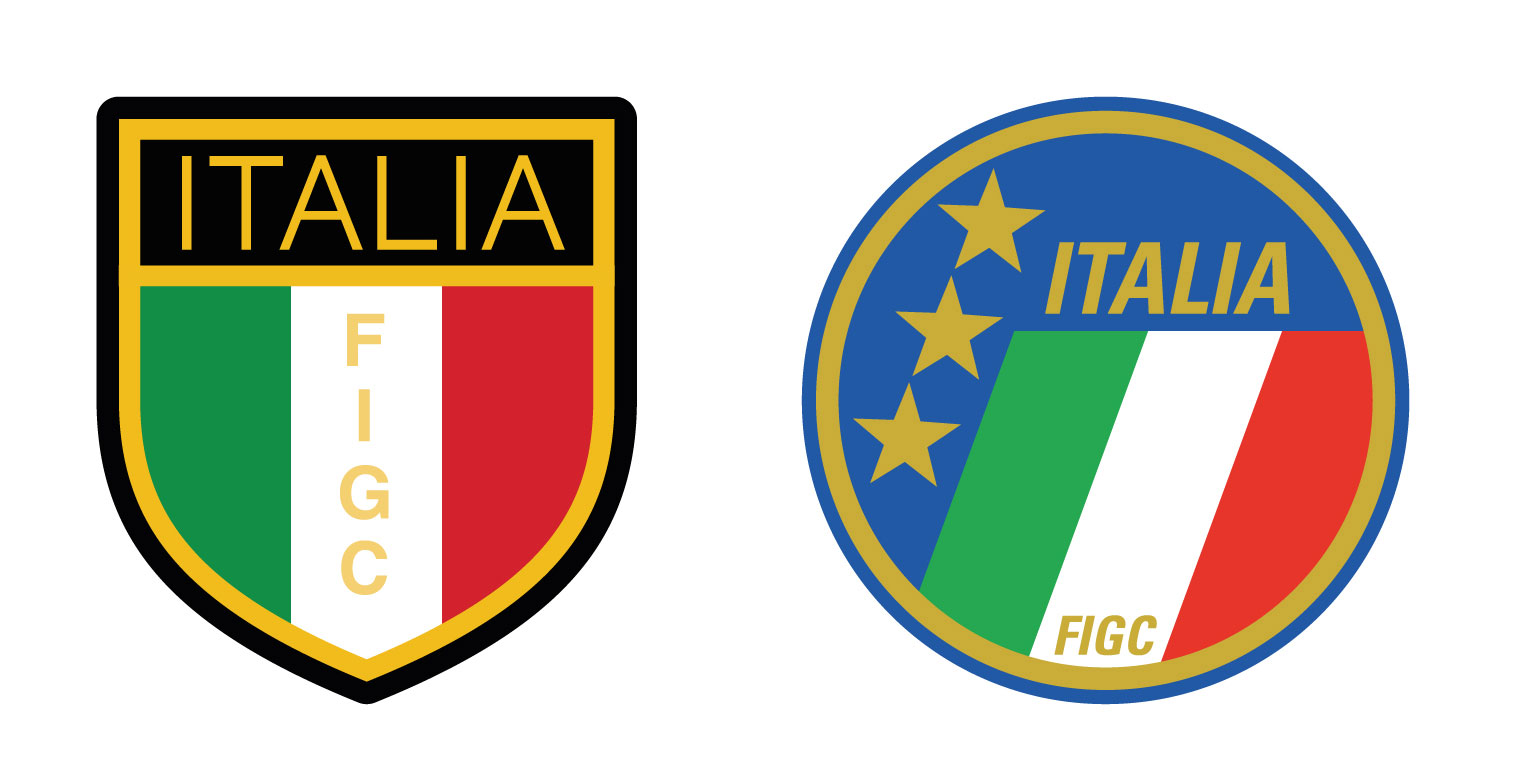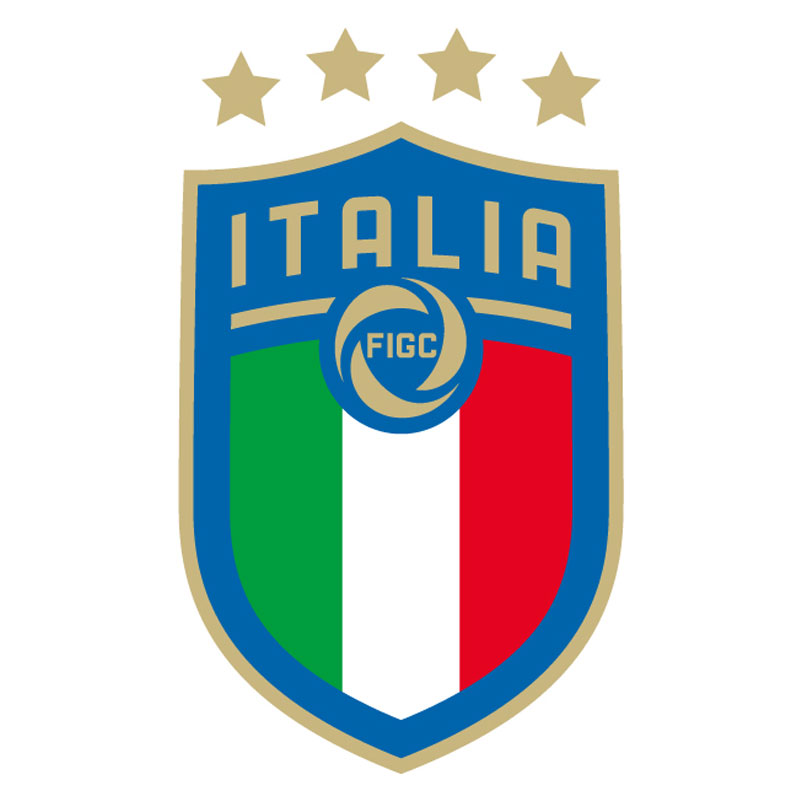History of the Logo
In 2021, the FIGC decided to renew its image, distinguishing the crest on the jerseys worn on matchdays from the 'corporate-institutional' one. A modern and authoritative logo was added to the shield, graphically depicting the innovation process desired by President Gabriele Gravina. It is an emblem inspired by iconic elements that best represent the Federation's activities outside of football. Activities of social responsibility and those with young people and the building of institutional and international relations – with the aim of enhancing the multidimensionality of football in all its facets – make the Federation even more recognisable as it looks to promote a profound cultural revolution for the whole movement.
The aesthetics of the first footballs inspired the circular shape and vertical graphics of the new look, with a clear and profound reference to the game’s origins, revisited through a contemporary interpretation of the symbol. Within the logo, the acronym of the Italian Football Federation takes centre stage, reaffirming the strong presence and constant work of our Federation. The colours naturally recall those of the National Team jersey and the Italian flag.
The FIGC logo's history

The first logo was a reference to the House of Savoy's royal emblem, with a red shield featuring a white cross with a blue trim. The same colour was selected by the FIGC President of the time, Felice Radice, as the colour for the National Team after they first wore white against France in Milan in 1910.
During the fascist period, a crown and fasces were added to the design. During this period, the Azzurri won the 1934 and 1938 World Cups and gold at the 1936 Olympics under Vittorio Pozzo.

After the war, football was one of the instruments that helped the country to rise again and the tricolour flag featured on the kits.
In 1952, 'Italia' was added in gold to further signify the link and identify with the country. After years of disappointment, two of the greatest pages in Italy's history were to follow with the 1968 European Championship win on home soil before the team finished as runners-up at the 1970 World Cup in Mexico after beating West Germany in an epic semi-final that finished 4-3.

In 1974, the logo was redesigned: a diamond was placed around the tricolour along with a yellow ball, and the name surrounded the whole design in the border. In some cases, the diamond was inside a square shape featuring the acronym.

In 1982, a small change was made for the 1982 World Cup in Spain, with FIGC written vertically down the white of the flag. In 1984, a new logo replaced the traditional one. On the inside were three stars on a field of blue, with 'Italia' written at the top and FIGC at the bottom of the white in the flag.

In 1992, the Federation launched a competition to find a new design. Patrizia Pattacini submitted the winning entry with a design reminiscent of a stylised 'i' with a blue circle at the top left. Elsewhere, there were the three stars on a blue background above the full name of the Federation and the flag, which remained the most enduring element since the royal design was abandoned.

In 2000, the flag and shield design from the 1950s returned, with the three stars for the World Cup wins taking permanent pride of place, while the full version of the name was removed. In reality, the three-star design was worn in the first friendly after the World Cup in Spain, which saw Italy take on Switzerland on 27 October 1982. However, it wasn't worn consistently due to FIFA only officially approving the use of designs commemorating World Cup wins midway through the 1990s.

In 2006, the design changed again with a modernised version that paid tribute to the original shield. It was a squarer design, with ‘FIGC’ taking a central role in the middle of the white and three stars positioned at the bottom.
In 2007, the design needed updating after the fourth World Cup win in Germany, so a fourth star was added at the bottom and the FIGC section was made bigger and moved higher up.

In 2017, a new logo was presented, and it made its debut on the kit during Italy vs. FYR Macedonia at the Stadio Olimpico - Grande Torino in Turin during a World Cup qualifier. It replaced the previous edition from 2007. It was created from the need for a modern design that referenced designs of the past, thus combining tradition and modernity. The gold features symbolised strength and success, while there was also the flag and blue of the shirts with the Italia typeface and four stars for the World Cups won in 1934, 1938, 1982 and 2006.

In 2021, the FIGC decided to renew its image. A modern and authoritative logo was added to the shield with activities of social responsibility and those with young people as well as institutional and international relations in mind. The aesthetics of the first footballs inspired the circular shape and vertical graphics of the new look, with a clear and profound reference to the game’s origins, revisited through a contemporary interpretation of the symbol. Within the logo, the acronym of the Italian Football Federation takes centre stage, reaffirming the strong presence and constant work of our Federation. The colours naturally recall those of the National Team jersey and the Italian flag.


